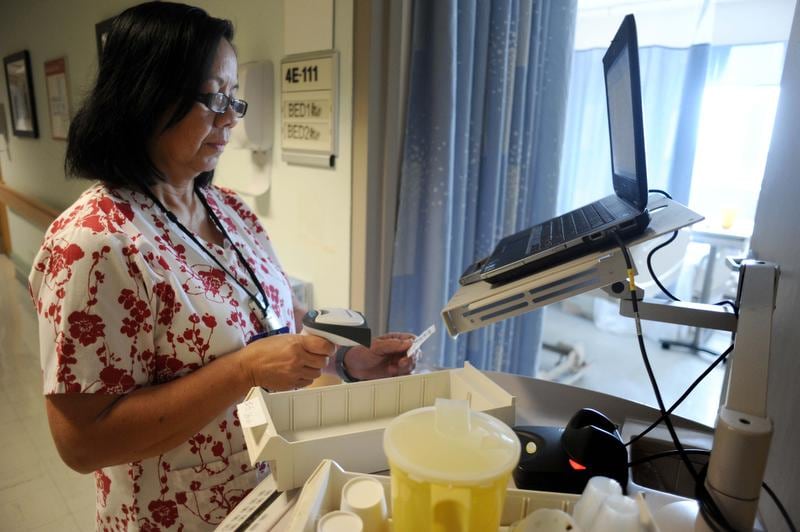A new entry in the Pentagon’s most recent suicide event report data shows the instances of suicides, suicide attempts and suicidal ideations among new troops during their first six months of service, broken down by where they went to initial entry training.
Fort Leonard Wood, Missouri, the Army’s home of military police, chemical engineer basic training, showed by far the most risk in 2019: 26 suicide attempts and 212 reports of suicidal ideations, with roughly 15,000 basic trainees every year. The data does not delineate whether the events occurred during basic training itself, or after those soldiers got to their first units.
By contrast, the Army’s biggest training post is Fort Jackson, South Carolina, which reported two attempts and 253 reports of suicidal ideations in 2019, out of roughly 48,000 total trainees every year.
“Risk of suicide can often arise from a range of factors, including at the individual, relationship, and community levels,” Maj. Charlie Dietz, a Pentagon spokesman, told Military Times on Friday. “The Department’s approach is consistent with research and targets suicide prevention efforts that take into account the unique characteristics of our population.”
The inclusion of those statistics is mandated by the 2020 National Defense Authorization Act, so the 2019 DoDSER marks its first appearance.
RELATED

The data shows hundreds of reports of suicidal ideations and dozens of attempts, but no deaths by suicide.
“The Department’s ongoing efforts related to violence prevention will help military leaders better identify installation or unit climate issues and support efforts to make appropriate improvements,” Dietz said.
While DoD didn’t respond to a question about how they intended to use the initial entry training data in its prevention efforts, Dietz said the department is launching a program aimed specifically at new troops.
A spokeswoman for Fort Leonard Wood did not offer any possible explanation for their high numbers.
“Fort Leonard Wood leaders are committed to providing Soldiers and their families the tools they need to improve personal readiness, strengthen their resiliency, and reinforce the physical, psychological, and social protective factors they need to serve successfully,” Tiffany Wood told Military Times on Wednesday. “We believe engaged leadership, focused training and education promote a supportive environment, prevent high-risk behaviors and increase Army readiness.”
All suicide attempts by trainees are reported, and trainees are monitored thereafter, she added.
The Pentagon has long known many of the risk factors for suicide among troops: It often follows relationship or financial stress, mostly in young, white men. And despite myriad behavioral health resources available, the majority of service members who take their own lives have no known mental health diagnosis.
The forthcoming Rational Thinking ― Emotional Regulation ― Problem Solving program, also knows as REPS, will aim to “to help young and enlisted Service members with foundational skills (e.g., problem-solving, emotion regulation) to deal with life stressors early in one’s military career,” he said.
In total, 498 service members took their lives in 2019, according to the most recent information provided by DoD. Of those, 344 were active-duty, 65 were in the Reserve and 89 were National Guardsmen. While suicide numbers have been on a climb in the military, according to data, the rates are on par with civilian rates in the same age range.
Getting help
According to the 2019 DoDSER, about 52 percent of troops who died by suicide had “made contact” with military health care providers before their deaths, though the report doesn’t elaborate on what that care might have looked like, or if it included a behavioral health visit.
At the same time, 56 percent of them had no behavioral health diagnosis. That was even more common for the active-duty component, where 66 percent of troops who died by suicide had no mental health diagnosis, and neither did 76 percent of those who attempted suicide.
The numbers bring up a common issue in mental health, especially for the military, where health issues are, theoretically, tracked closely.
But mental health support depends almost entirely on a service member disclosing how they’re feeling, unless an incident of self-harm is witnessed by someone else who pushes to report it.
That can be especially true for new recruits. Technically, the military does not enlist or commission anyone with a history of depression, anxiety, attention deficit disorder or other behavioral challenges. But in the literal sense, it’s hard to stop them from being recruited, either because they don’t recognize their struggles or have never sought professional help for them.
“I’ve had kids come into the office and never [say] a word to us about what was wrong with them or anything,” a senior recruiter told Army Times in May, after an incident with a Fort Jackson trainee. “And they got to basic training and snapped…I have seen that happen.”
Data going back to 2017 shows a similar pattern, where most suicides and suicide attempts are carried out by troops who were not known to have mental health issues. This is despite more than a decade of concerted suicide prevention efforts across the services, and more importantly, messages from the top that there’s nothing wrong with seeking out support.
How those messages translate to the individual level is another story. The military’s culture, in ways explicit and implicit, encourages troops to push through their pain and drive on.
Coupled with either experience or anecdotes about others who’ve sought help and saw their careers take a turn for the worse, many still feel that going to behavioral health will mark them as “weak” in the best case scenario, and squash their dreams in the worst.
“We’ve been trying so hard to remove the stigma inside the military of seeking help for mental health issues,” Pentagon spokesman John Kirby told reporters during a briefing on June 29. “And it’s why the secretary has put such an emphasis on looking at suicide prevention programs to make sure that we’ve got the ones that are right in place and that we also encourage and actively so colleagues and teammates to look out for one another.”
If you or someone you know is in need of help, the Suicide Prevention Line is free, confidential, and available 24/7. They can be reached at 1-800-237-8255. Veterans can call 1-800-273-8255. These services can also be accessed by chat on https://suicidepreventionlifeline.org/
Service members, veterans, and loved ones can also contact Military One Source, 24/7 at 1-800-342-9647, or through live chat at http://www.militaryonesource.mil
Meghann Myers is the Pentagon bureau chief at Military Times. She covers operations, policy, personnel, leadership and other issues affecting service members.





